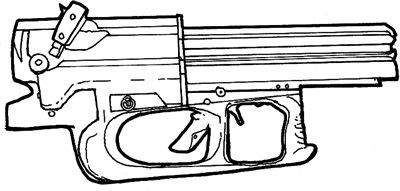Deleted member 1487
Actually what you've written about your father's experience is directly in line with what British operations research showed about in Europe. Plus the Soviets did field SMGs companies even after Stalingrad and created a 'combined arms' unit that married the SMG equipped infantry to platoon and company level LMGs/MMGs and some riflemen to support them. From the little I could find on the LAD machine gun (belt fed long barreled SAW that fired the 7.62x25 Tokarev cartridge) the Soviets considered the 300-400m range the decisive range for an assault and they had a gap that needed to be filled, which the LAD was supposed to do before the 7.62x39 predecessor was proposed to do that better (though the LAD was a success for that it was intended for) and the RPD was created for that role. I assume that was because the PPSH41 and PPS 43 covered the 200m and below so well.The thing with the BAR is that buy the time my dad was in Korea and leading patrols it was a slow war. So being on patrol you could alwas fall back to support so they didn’t have any need for the heavy rounds or long range the BAR provided. They had quick encounters with lots of rounds fired and being able to manuver the gun was more important then a heavy round. And a. Gun as long and heavy as the bar is going to limit how fast you can bring it on target. Add in the weight of the gun and ammo and how that limits the amount you can carry and it is just the wrong weapon at the wrong place.
But really if you think about it you can argue that the BAR was not an attempt at a LMG. It was an attempt at an assault rifle at a time when the military thought it needed a rifle caliber round. If anyone back then thought you could get away a modern assault rifle sized round then you probably get a much smaller BAR. And it probably fires faster. As no one really thought you needed rapid fire. (Another reason I say the BAR was never men t to be a LMG)
In some ways the Tommy Gun and the Carbines are also an attempt to creat what we know of today as an assault rifle. But out of the three the Carbone is probably as close as you get back then.
Thus in Europe in WW2 it was more important as most folks had regular rifles with no automatic ability. And I suspect the way combat worked was a bit different then being on Patrol between your line and the other guys line like towards the end of Korea. That is more a a Vietnam type of thing.
Remember the type of war you are fighting has a big effect on the types of weapons you want. The greatest rifl in the world still sucks if the other guy is tossing ICBMs at you. But an ICBM is not much use if you have guys standing 20ft away shooting a rifle at you.
But it is hard to predict the future. So the BAR was something someone thought would do a specific job in one war that was used in a different way in a different . You never know what the future will bring. My father was a young kid in WW2 getting bombed by the US and England in Germany and I am sure he never dreamed he would someday be a sergeant leading a patrol of US Army soldiers in Korea.
So for WW2 (and honestly WW1) and just about all wars since up until the introduction of wider spread Class IV body armor, the average infantryman would probably have benefited more from an 'assault SMG' like the Colt MARS, just in open bolt, full automatic and a bit more powerful, with a barrel length like the M4 Carbine.
Per operations research the ability to 'snap fire' at targets of opportunity in bursts with light, low recoil ammo with a high ROF like the PPSH41 was the best way to achieve hits. Something like the .19 Badger or .221 Fireball (or 5.56 FABRL) with a light (~40 grain) bullet in a delayed blowback open bolt platform would probably be ideal especially if it has a constant recoil set up like the Ultimax. You sacrifice penetration and range, but you probably have an effective range of 300m, which would cover 95% of all handheld small arms combat. If you really wanted you could also probably field a long barreled SAW like the LAD with a drum or high cap magazine to enhance squad firepower and leave the heavier long range weapons to high levels of command than the squad.


